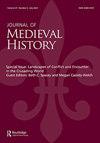一种有很多意义的简单食物:中世纪晚期的英国面包
IF 0.3
2区 历史学
0 MEDIEVAL & RENAISSANCE STUDIES
引用次数: 1
摘要
本文章由计算机程序翻译,如有差异,请以英文原文为准。
A simple food with many meanings: bread in late medieval England
ABSTRACT Bread was the most important item of diet in medieval England. Cereals were consumed in boiled form, but bread was preferred. Bread was not just convenient, but was also symbolic of well-being. Although breads were made from other cereals and legumes, wheat bread occupied a prime position, and in particular white wheat bread was regarded highly by consumers. Reasons are given for these attitudes, including the practical advantage that white bread was an efficient source of energy and was cost-effective. The political management of the corn trade and bread baking through such regulations as the assize of bread was intended to prevent unrest, but occasionally consumers organised ‘food riots’.
求助全文
通过发布文献求助,成功后即可免费获取论文全文。
去求助
来源期刊

JOURNAL OF MEDIEVAL HISTORY
MEDIEVAL & RENAISSANCE STUDIES-
CiteScore
0.60
自引率
0.00%
发文量
29
期刊介绍:
The Journal of Medieval History aims at meeting the need for a major international publication devoted to all aspects of the history of Europe in the Middle Ages. Each issue comprises around four or five articles on European history, including Britain and Ireland, between the fall of Rome and the Renaissance. The Journal also includes review articles, historiographical essays and state of research studies.
 求助内容:
求助内容: 应助结果提醒方式:
应助结果提醒方式:


